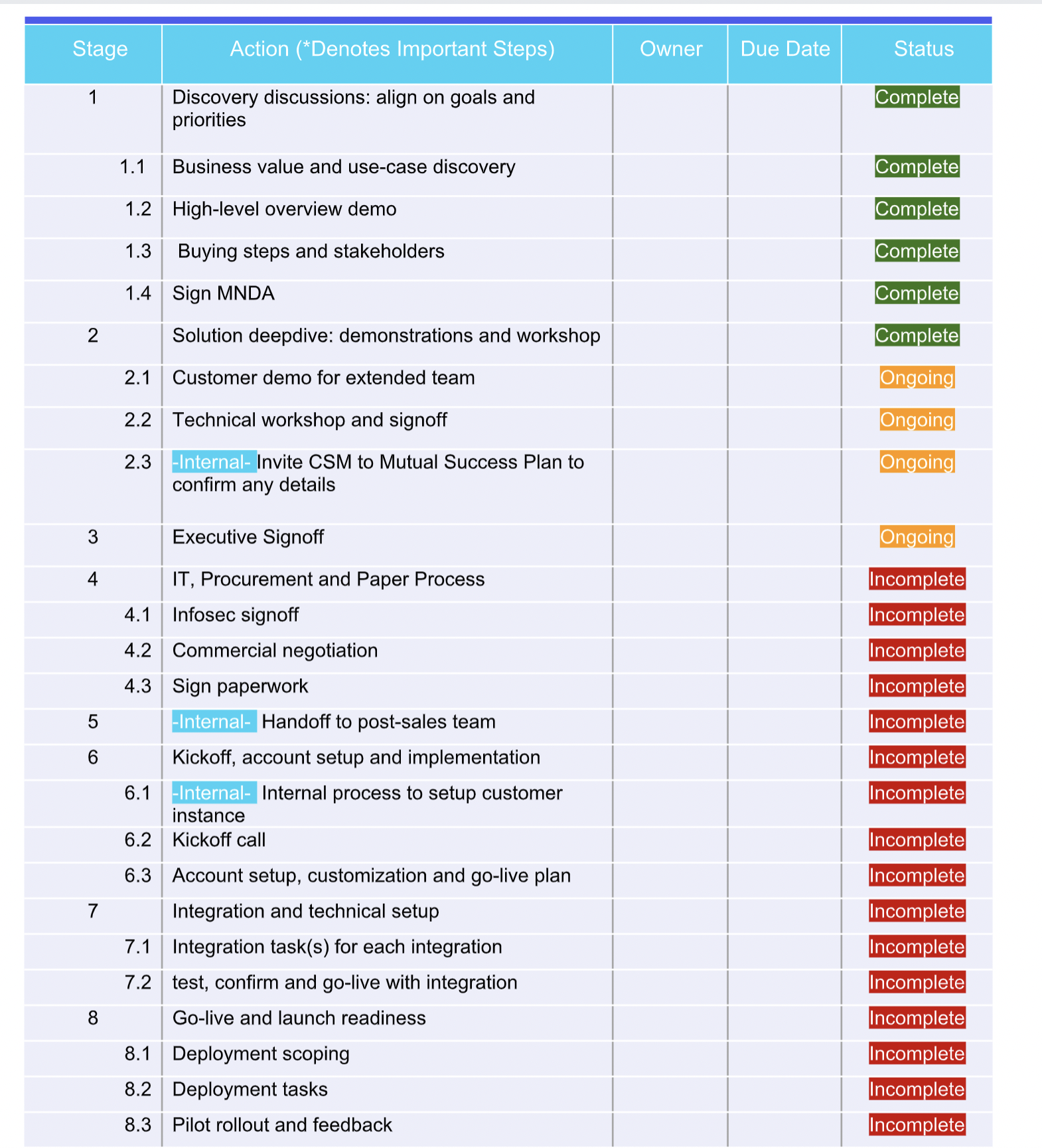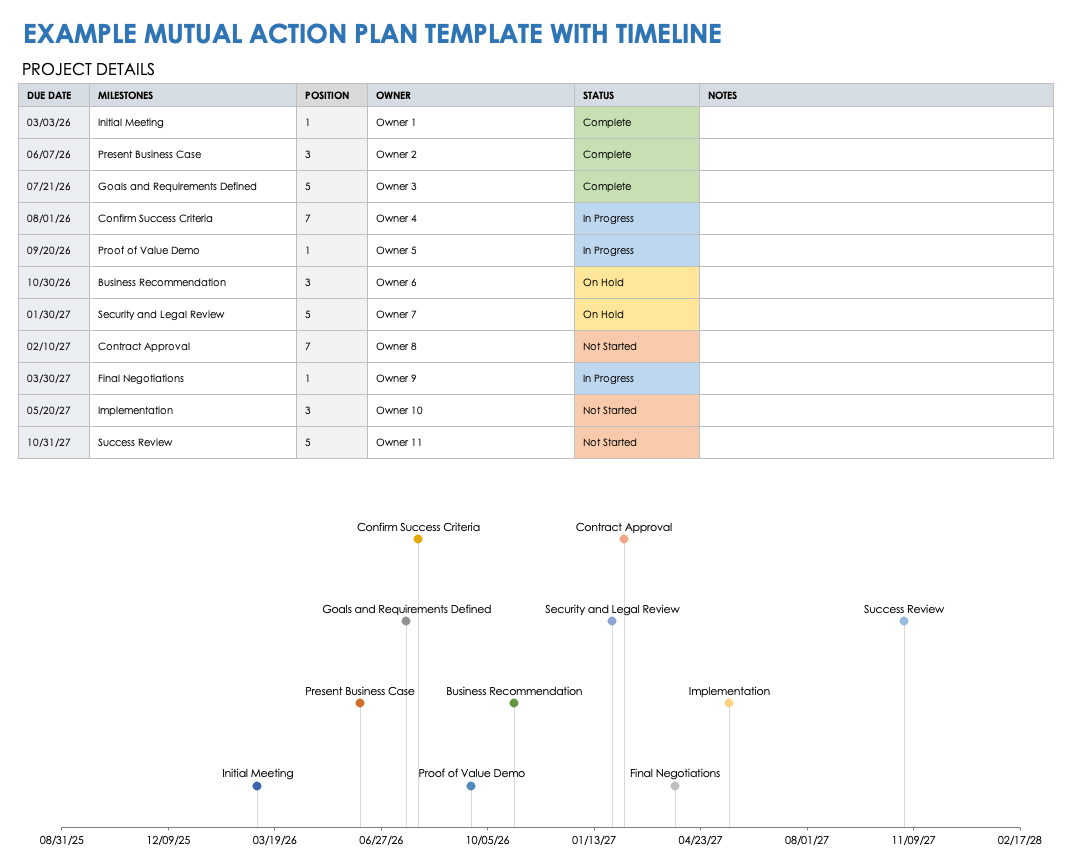
When it comes to achieving success, having a solid plan in place is crucial. One effective strategy that can help individuals and teams reach their goals is the mutual action plan.
This article will provide a comprehensive guide to understanding and implementing a mutual action plan, exploring its benefits, components, and steps to success.
What is a Mutual Action Plan?
A mutual action plan is a collaborative approach to goal-setting and problem-solving. It involves multiple individuals or parties working together towards a common objective. The plan outlines specific actions, responsibilities, and timelines to ensure everyone involved is on the same page and working towards the same goal.
A mutual action plan can be used in various contexts, such as business partnerships, project management, and personal development. It provides a structured framework for individuals and teams to work together effectively and achieve desired outcomes.
Benefits of a Mutual Action Plan
Implementing a mutual action plan offers numerous benefits for individuals, teams, and organizations. Some of the key advantages include:
- Clarity: A mutual action plan provides a clear roadmap for achieving goals, ensuring that everyone understands their role and responsibilities.
- Accountability: By assigning specific tasks and deadlines, a mutual action plan holds individuals accountable for their contributions.
- Collaboration: The plan encourages collaboration and open communication among team members, fostering a more productive and supportive working environment.
- Efficiency: With a mutual action plan in place, resources can be allocated effectively, and time can be managed more efficiently.
- Progress Tracking: The plan allows for regular progress updates and evaluation, facilitating adjustments and improvements along the way.
Components of a Mutual Action Plan
A mutual action plan typically consists of several key components:
- Goal: Clearly define the overall objective that the plan aims to achieve. The goal should be specific, measurable, attainable, relevant, and time-bound (SMART).
- Actions: Identify the specific tasks or actions required to reach the goal. Each action should be broken down into smaller, manageable steps.
- Responsibilities: Assign responsibilities to individuals or teams for each action. Clearly define who is accountable for completing each task.
- Timeline: Establish realistic deadlines for each action. Consider dependencies and prioritize tasks accordingly.
- Resources: Determine the necessary resources, such as budget, materials, or personnel, needed to execute the plan effectively.
- Communication: Define how communication will be conducted throughout the plan. Establish regular check-ins and channels for sharing updates and addressing concerns.
- Evaluation: Set up mechanisms to evaluate progress and success. Determine key performance indicators (KPIs) and establish milestones for tracking achievements.
Steps to Implement a Mutual Action Plan
Now that we understand the components of a mutual action plan, let’s explore the steps to successfully implement it:
1. Identify the Goal
Clearly define the desired outcome or objective that the plan aims to achieve. Make sure the goal is specific, measurable, attainable, relevant, and time-bound (SMART).
2. Break Down the Goal into Actions
Identify the specific tasks or actions required to reach the goal. Break them down into smaller, manageable steps to ensure clarity and ease of execution.
3. Assign Responsibilities
Assign responsibilities to individuals or teams for each action. Clearly define who is accountable for completing each task and ensure that everyone understands their role.
4. Establish a Timeline
Set realistic deadlines for each action. Consider dependencies and prioritize tasks accordingly. Make sure the timeline allows for flexibility and adjustments when needed.
5. Allocate Resources
Determine the necessary resources, such as budget, materials, or personnel, needed to execute the plan effectively. Make sure resources are allocated appropriately and efficiently.
6. Communicate and Collaborate
Establish clear channels of communication for sharing updates, addressing concerns, and fostering collaboration among team members. Regularly check in to ensure everyone is on track and aligned with the plan.
7. Track Progress and Evaluate
Regularly track progress and evaluate achievements against set milestones and key performance indicators (KPIs). Make adjustments as necessary to ensure continued success.
Example of a Mutual Action Plan




Let’s consider an example of a mutual action plan for a team working on a marketing campaign:
- Goal: Increase brand awareness and drive website traffic by 20% within three months.
- Actions: Develop a content marketing strategy, optimize website SEO, launch social media campaigns, and collaborate with influencers.
- Responsibilities: Content creation – Sarah, SEO optimization – John, Social media management – Emma, Influencer collaboration – Mark.
- Timeline: Content marketing strategy – Week 1, SEO optimization – Weeks 2-3, Social media campaigns – Weeks 4-6, Influencer collaboration – Weeks 7-9.
- Resources: $5,000 budget for social media ads, access to content creation tools, and a list of potential influencers.
- Communication: Weekly team meetings, shared project management software, and email updates.
- Evaluation: Monthly performance reports tracking website traffic, social media engagement, and brand mentions.
Conclusion
A mutual action plan is a powerful tool for achieving success in various areas of life. By clearly defining goals, assigning responsibilities, establishing a timeline, and fostering collaboration, individuals and teams can work together more effectively toward shared objectives. Remember to regularly track progress, evaluate achievements, and make adjustments as needed to ensure continued success. Implementing a mutual action plan can lead to improved productivity, accountability, and ultimately, the achievement of desired outcomes.
Mutual Action Plan Template Excel – Download